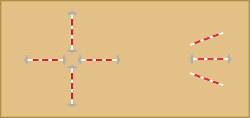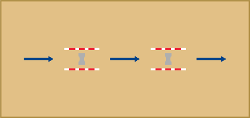News
Boost your winter training with top tips from Dressage Unwrapped
Friday, 06 January 2023
Between the dark, the cold and the wet, winter isn’t always the most inspiring time to focus on your horse’s training. However, it’s a good opportunity to polish your skills before the start of the competition season – whatever level you’re riding at. To give you the motivation to push through, we’ve gathered some top tips and must-try exercises from the coaches and riders who took part in the Dressage Unwrapped masterclass at December’s London International Horse Show.
Themed around ‘back to the future’, the four-part masterclass brought together some exciting young horse and human talent and some top-class coaches – including World Championship medallists, Olympic champions and those they train with – to share their insights.
Carl Hester
First up was none other than the dressage maestro himself, Carl Hester, aided by his friend Henriette Andersen and six-year-old Marley, who is by Carl’s London 2012 ride Uthopia.
Carl’s masterclass emphasised the importance getting the basics right, from maintaining an upright position in the saddle to insisting on a still, square halt each time your horse stops.
“Everyone thinks you have to buy a spectacular horse for dressage, but you don’t,” he pointed out. “You have to buy something with a leg at each corner, that wants to go forward and then you can change things, especially the trot. The work ethic is important when picking a horse – the horse has to want to go forward and work.”
Carl then delighted the audience by bringing out the now 21-year-old Uthopia, ridden by Amy Woodhead at his first ‘party’ in a number of years. Carl explained that Uthopia has proven to be an amazing horse for teaching people to ride at Grand Prix level since his retirement from competition. “If you look after older horses, this is what they can do,” commented Carl as ‘Uti’ showed off his flashy moves.
Richard Davison
According to Richard Davison, who was part of the bronze medal-winning team at last year’s FEI Dressage World Championship, “winter is a great time to get started on flying changes.”
Dylan Deutrom and San Marco, who represented Great Britain at the FEI U25 European Championship last summer, demonstrated Richard’s top tips for achieving your first flying change:
- Start early, progress slowly: take your time to develop the qualities and understanding between you and your horse
- Let’s get airborne: flying changes happen in the air, so a good-quality canter is essential
- Find the right place for your horse: different horses get used to different places to practise changing their lead – such as on the diagonal, in a corner, or on a circle – so work out what suits your horse
- On the aids: using a half-halt with a small asking aid from you will encourage your horse to change his lead.
Dylan and ‘Marco’ then skipped down the long side in a demonstration of how flying changes can eventually be strung together into effortless one-time changes.
Richard Waygood and Laura Collett
Third out was British Equestrian’s very own Eventing Performance Manager, Richard (Dickie) Waygood MBE. Aided by Laura Collett and the eight-year-old Outback, Dickie shared some fun pole and jump exercises to beat the winter blues and improve your horse’s rideability.
Exercise 1: Lay out three canter poles in a fan shape so you’re riding over them in a curving line. How tightly you ride the curve will affect your horse’s canter – an inside line will collect him, while taking an outside line will encourage him to stretch out. Once you and your horse are comfortable with the exercise, try turning the middle pole into a small fence.
According to Dickie, here are the three things to ask yourself when doing both these exercises:
- Am I sat in balance?
- Do I have the correct way of going?
- Have I found the line?
Exercise 2: Build four small fences on a circle, spaced equidistant apart. You can then ride over the fences on a variety of lines, such as:
- Jump one fence, then turn away to ride a circle before coming to the next fence – you can adjust the size of the circle to suit your horse and his ability
- Jump one fence, then take a curving line to the one on the opposite side of the circle
- Jump all four fences consecutively in a circle – again, you can choose an inside or outside track to adjust your horse’s canter
Mix and match your lines to keep your horse thinking, and build suppleness and power.
Layout for Exercise 1 and Exercise 2
Exercise 3: The final exercise involves jumping two upright blocks on a related distance down the centre line, with guide poles on either side like train tracks. The aim of the exercise to encourage your horse’s back legs to follow his front legs, giving him greater scope to adjust his stride between the blocks and pop over them neatly. Having the poles on the floor will help to keep him straight and balanced.
“I think we should quit while we’re ahead!” laughed Laura, after completing this exercise perfectly on the first attempt.
Layout for Exercise 3
Anne van Olst and Lottie Fry
Finally, Anne van Olst came into the arena with Lottie Fry on the exciting Nalegro, a four-year-old stallion by Painted Black out of Valegro’s full sister Jalegrofleur. Known as Blackberry – a moniker inspired by his famous uncle’s stable name of Blueberry – Nalegro was bred by Anne and her husband Gertjan at their base in the Netherlands.
A fruity nickname wasn’t the only similarity between the two horses, though – as Blackberry strutted around the arena, Lottie explained: “He’s enjoying himself in here. There’s so much power in his little body and his control of it is amazing for a four-year-old.”
As she was getting him used to the new, electric surroundings, Anne explained how they work with all their horses at their stables in Denmark. “No two horses can be trained the same,” she commented, going on to explain that it’s important to understand each horse’s unique character and the best ways to work with them to bring out their potential. She also shared that Lottie is often riding 14 horses a day, “putting as much effort into the first one as she does for the last one.”
At this point, Lottie chipped in to add: “When you love it, and you love the horses and the training, every horse motivates you and you learn something from every horse every day. You never stop learning and it’s inspiring to ride all day every day.”
Latest News
- 27 December 2025
- 22 December 2025
- 22 December 2025
- 19 December 2025
- 17 December 2025
- 10 December 2025
- 10 December 2025
- 09 December 2025
- 04 December 2025
- 02 December 2025
- All News

